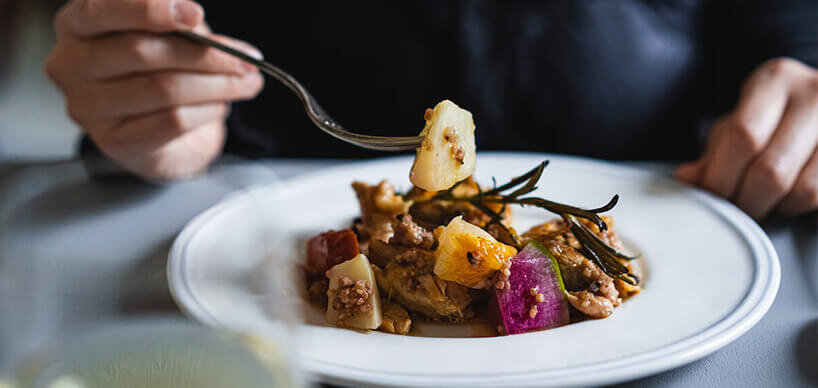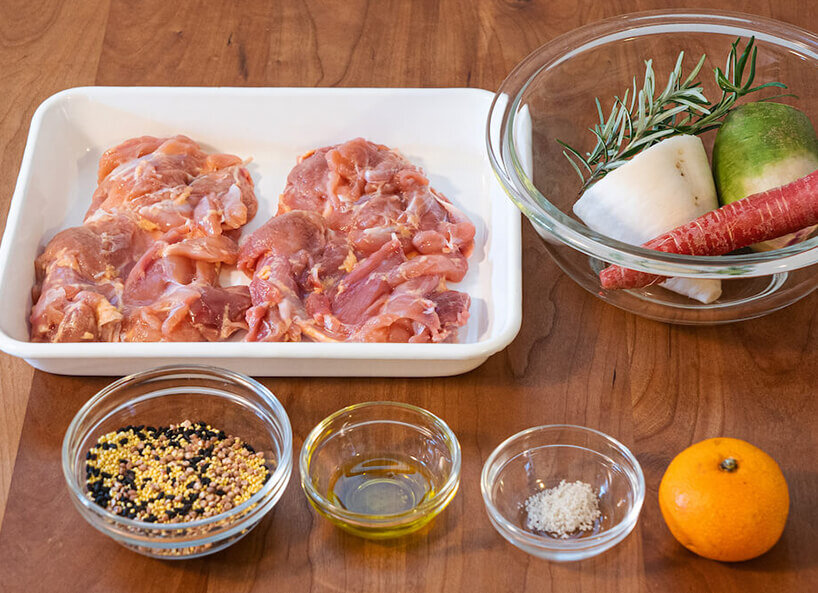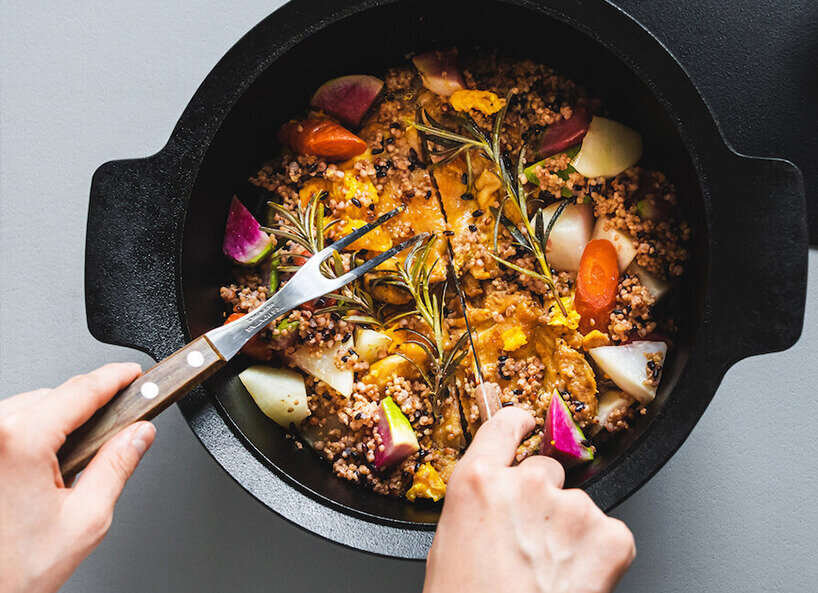Winter vegetable stew with chicken and millet

On cold winter days, there's hardly anything better than warming up from the inside. A hot stew is not only delicious but also a healthy, nutritious, and cozy meal that tastes particularly good on chilly days. Many winter vegetables such as cabbage, carrots, and potatoes are rich in vitamins and minerals that strengthen the immune system and can help ward off colds and flu. Additionally, it's an easy and delightful way to combine multiple ingredients in one dish. The flavors and aromas of the various ingredients naturally blend in a stew, providing a tasty and nutritious meal. The prolonged simmering of a large pot on the stove can also convey a sense of comfort and coziness. The pleasant aroma creates an atmosphere of relaxation and togetherness.
Stew in cast iron pot Palma
Cooking in cast iron pots is a popular and effective method in Japan to prepare a variety of dishes and enhance the taste and texture of ingredients. The slow cooking and even heat distribution intensify the flavors and richness of the ingredients. The good heat retention contributes to the gentle and uniform cooking of the food, preventing it from burning or drying out. Especially stews are often simmered in cast iron pots and served as a warm meal.
Winter vegetables in Germany and Japan
There is a variety of vegetables that are harvested in Germany during winter and are suitable for a nutritious winter stew. By using local winter vegetables, not only can regional products be promoted, but also healthy meals can be prepared.
- Root Vegetables: Carrots, beets, parsnips, radishes, celeriac, and black salsify are all typical vegetable varieties grown and harvested in Germany.
- Cabbage or Leafy Greens: Kale, Brussels sprouts, savoy cabbage, red cabbage, chicory are often served in stews or as side dishes.
- Leek: Leeks, also known as "lauch," are frequently found in soups and stews.
- Pumpkin Vegetables: Pumpkins like Hokkaido, butternut, and acorn squash are harvested in autumn but last into winter. They are suitable for soups, casseroles, stews, or as a side dish.
- Mushrooms: Although mushrooms are not vegetables, they are often treated as such. Some of the popular local mushroom varieties include champignon, porcini mushrooms, chanterelles, chestnut mushrooms, oyster mushrooms, or shiitake mushrooms.
For our stew recipe, we have chosen the most well-known vegetables that are considered typical winter vegetables in Japan: Daikon radish and Ninjin carrots. However, Gobo, Satoimo, and Renkon (all root vegetables) are also commonly used in the kitchen, along with Satsumaimo (Japanese sweet potato). The sweetness and acidity of the mandarin oranges pair well with steamed winter vegetables and chicken. This recipe creates a dish that you'd want to enjoy with all five senses.
Winter vegetable recipe with stewed chicken, mandarin and millet
 3-4 personsNo. of persons
3-4 personsNo. of persons
 ca. 1 hourTotal Time
ca. 1 hourTotal Time
 easyLevel of difficulty
easyLevel of difficulty
 main mealDish
main mealDish
 ca. 500kcal per portionCalories
ca. 500kcal per portionCalories
 Meat
Meat
 Kitchenware
Kitchenware

|
500-600g
Chicken thigh
|
|
1
Tangerine
|
|
2 tablespoon
Olive oil
|
|
2 teaspoon
Salt
|
|
a pinch
Pepper
|
|
300-400g
Winter vegetables of your choice (parsnips, radish, beet ...)
|
|
70g
Millet
|
|
2-3
Rosemary leaves and dried herbs such as bay leaves
|
|
150ml
Water
|




















-from-the-yakiyaki-grill-pan.jpg)




